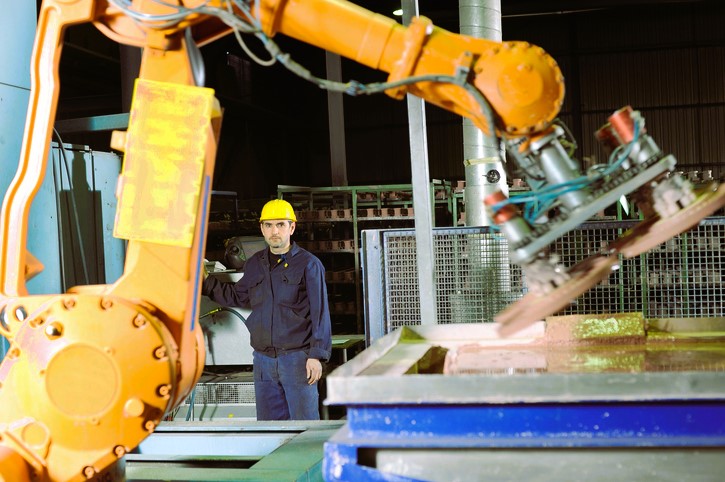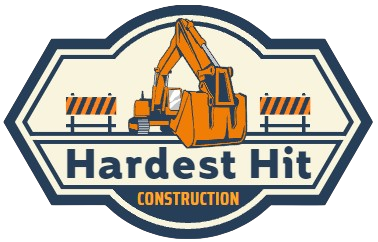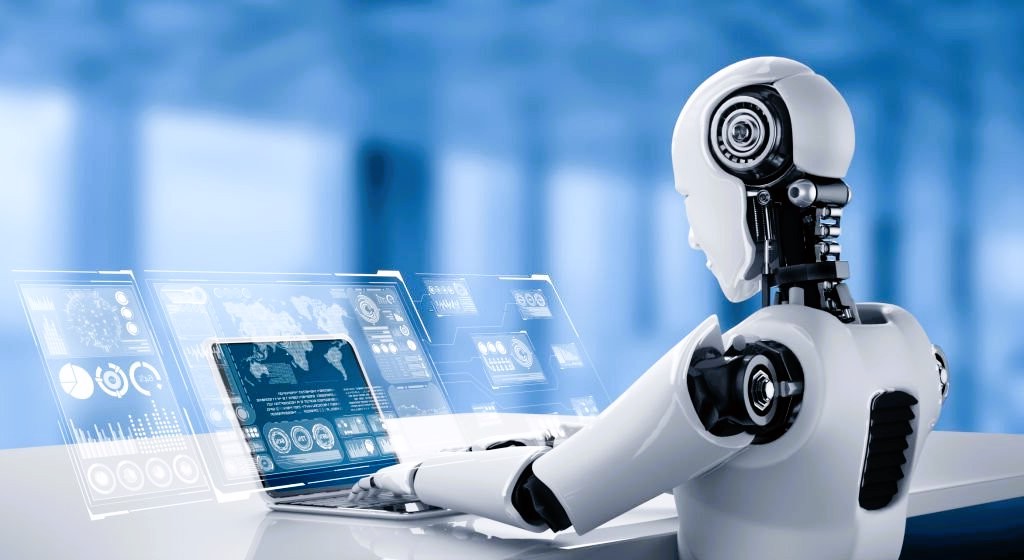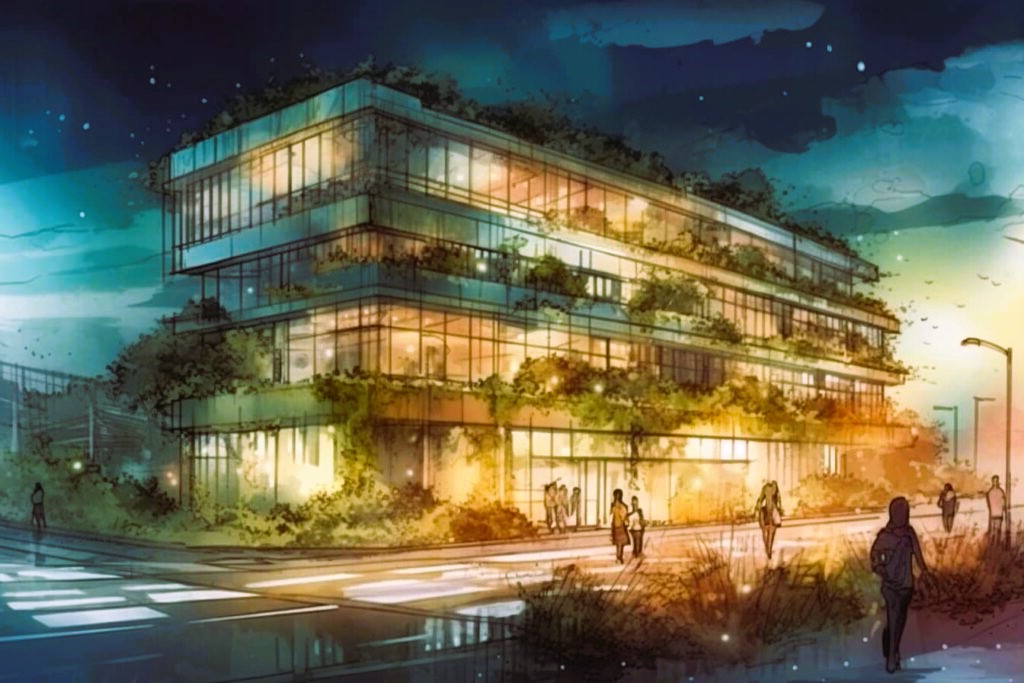The construction industry, traditionally known for manual labor and heavy machinery, is undergoing a transformative evolution with the integration of cutting-edge technologies. Among these advancements, construction robotics has emerged as a game-changer, revolutionizing the way projects are planned, executed, and completed. In this article, we will delve into the significant advancements in construction robotics and their transformative impact on the industry.
The Rise of Construction Robotics:
Construction robotics refers to the application of robotic systems and automation technologies in various aspects of the construction process. These technologies are designed to enhance efficiency, precision, and safety, addressing challenges that have historically plagued the construction industry.
Key Advancements in Construction Robotics:

- Robotic Bricklaying and Masonry:Traditional bricklaying is a labor-intensive process that can be time-consuming. Construction robotics now includes robotic bricklayers capable of autonomously placing bricks with precision and speed. These robotic systems can significantly accelerate the bricklaying process, reduce labor costs, and enhance overall construction efficiency.
- Autonomous Construction Vehicles:Autonomous vehicles, including bulldozers and excavators, equipped with advanced sensors and artificial intelligence, are transforming earthmoving and excavation tasks. These vehicles can operate autonomously or semi-autonomously, improving accuracy, reducing the risk of accidents, and increasing productivity on construction sites.
- 3D Printing in Construction:3D printing technology has found its way into construction, allowing for the rapid fabrication of building components. Robotic arms equipped with 3D printing capabilities can create intricate structures using various materials, including concrete. This technology enables the construction of complex and customized designs while minimizing material waste.
- Drone Technology for Surveying and Inspections:Drones equipped with high-resolution cameras and LiDAR sensors are revolutionizing surveying and inspections on construction sites. They provide real-time aerial views, helping construction professionals monitor progress, identify potential issues, and conduct surveys with unparalleled accuracy. Drones contribute to improved project management and site safety.
- Exoskeletons for Construction Workers:Exoskeletons, wearable robotic devices, are designed to augment the physical abilities of construction workers. These devices reduce strain on the body, enhance strength and endurance, and contribute to injury prevention. Construction workers wearing exoskeletons can perform tasks with greater ease and efficiency.
- Robotic Demolition:Traditional demolition methods are often hazardous and time-consuming. Robotic demolition machines equipped with precision tools can selectively dismantle structures with minimal noise, dust, and risk to human operators. These robots offer a safer and more controlled approach to demolition activities. Do you like the article? Read also about the role of women in construction.
- Robotics in Prefabrication and Modular Construction:Prefabrication and modular construction benefit from robotics in the assembly of building components. Robots can automate the fabrication and assembly of modular units, ensuring consistency and quality in a controlled environment. This approach reduces construction time on-site and enhances overall project efficiency.
- Construction Site Monitoring and Automation:Sensors and IoT (Internet of Things) devices are being integrated into construction sites to monitor various parameters in real-time. This data is used to optimize construction processes, automate routine tasks, and enhance overall project management. Smart construction sites equipped with these technologies are more responsive and adaptive to changing conditions.
Transformative Impact on the Construction Industry:
- Increased Efficiency and Productivity:Construction robotics significantly improve efficiency and productivity by automating repetitive and time-consuming tasks. Robots can work around the clock without fatigue, accelerating project timelines and reducing labor costs. This increased efficiency contributes to the timely completion of construction projects.
- Enhanced Safety:Safety is a paramount concern in the construction industry. Construction robotics reduce the exposure of workers to hazardous tasks, minimizing the risk of accidents and injuries. Robots can handle tasks in challenging environments, such as working at heights or in confined spaces, improving overall site safety.
- Precision and Accuracy:Construction robots operate with a high degree of precision and accuracy, ensuring that building components are manufactured and assembled to exact specifications. This level of precision contributes to the overall quality of construction projects, reducing errors and rework.
- Cost Savings:While the initial investment in construction robotics may be significant, the long-term cost savings are substantial. Reduced labor costs, faster project timelines, and minimized material waste contribute to improved project economics. Construction companies embracing robotics gain a competitive edge in terms of cost-effectiveness.
- Environmental Sustainability:Construction robotics, particularly 3D printing and prefabrication technologies, promote environmental sustainability. These methods minimize material waste, optimize resource usage, and reduce the carbon footprint of construction projects. Sustainable construction practices are increasingly becoming a priority, aligning with global environmental goals.
Challenges and Considerations:

While construction robotics offer transformative benefits, several challenges and considerations must be addressed:
- Initial Investment Costs:The adoption of construction robotics involves significant upfront costs for equipment, training, and integration with existing workflows. Construction companies must carefully assess the return on investment and long-term benefits.
- Workforce Adaptation:The integration of robotics may require reskilling and adaptation for the existing construction workforce. Workers need training to operate and collaborate with robotic systems effectively.
- Regulatory and Safety Standards:The construction industry is subject to stringent safety and regulatory standards. Ensuring that construction robotics comply with these standards is crucial to guaranteeing the safety of workers and the public.
Construction Robotics Resources:
For further exploration of construction robotics and industry standards, readers are encouraged to refer to resources provided by Wikipedia. These platforms offer comprehensive information on construction robotics, including technological advancements, applications, and the evolving landscape of automation in the construction industry.
Conclusion:
Advancements in construction robotics are reshaping the construction industry, introducing unprecedented levels of efficiency, safety, and sustainability. As technology continues to evolve, the integration of robotics will become increasingly commonplace, revolutionizing how we conceptualize and realize construction projects. By staying informed about these advancements and leveraging the resources available, construction professionals can navigate the transformative landscape of construction robotics and position themselves at the forefront of industry innovation.




